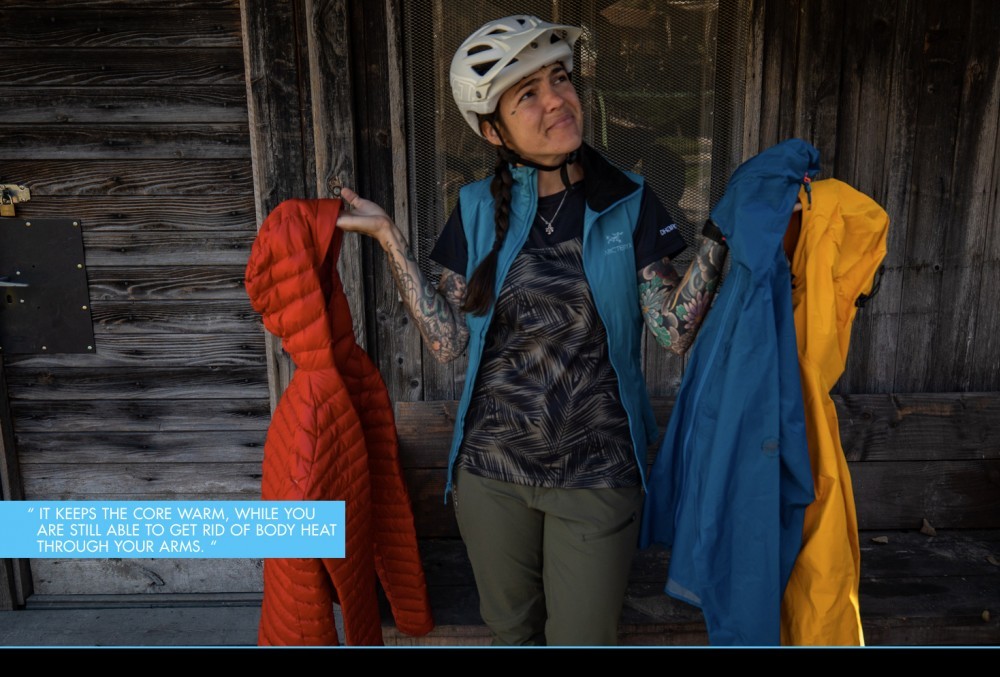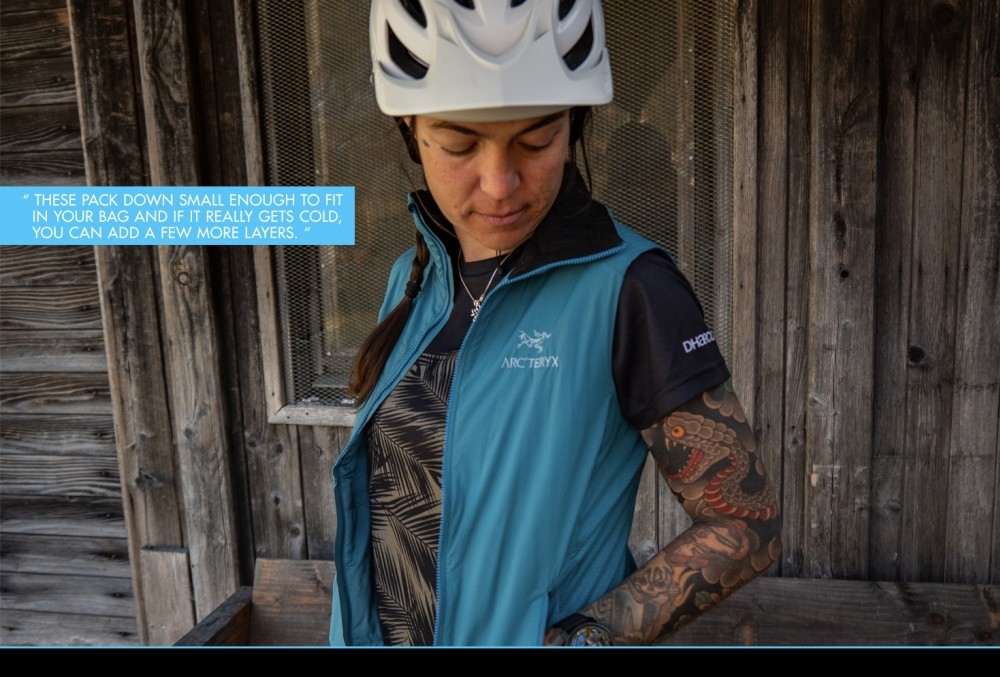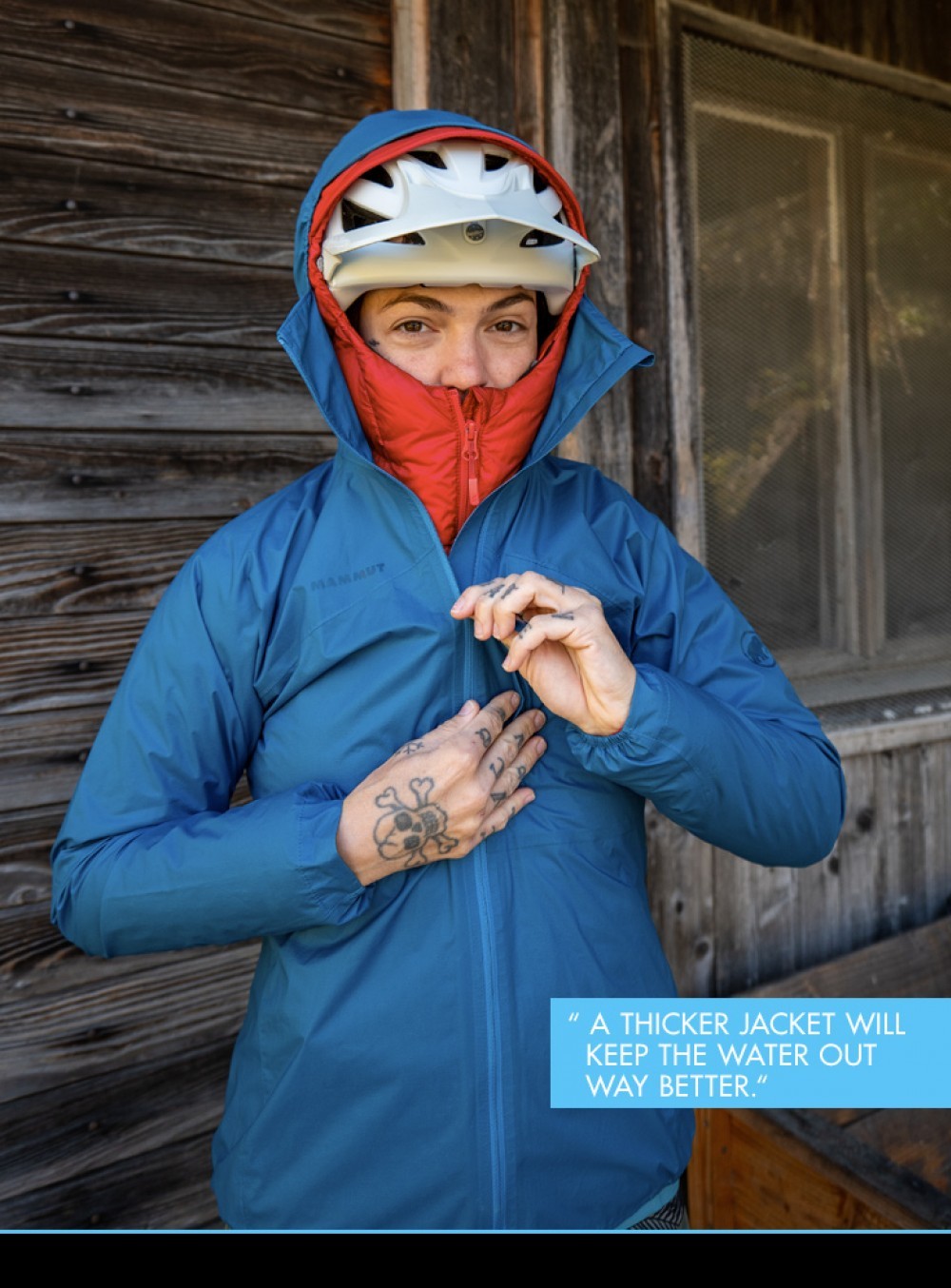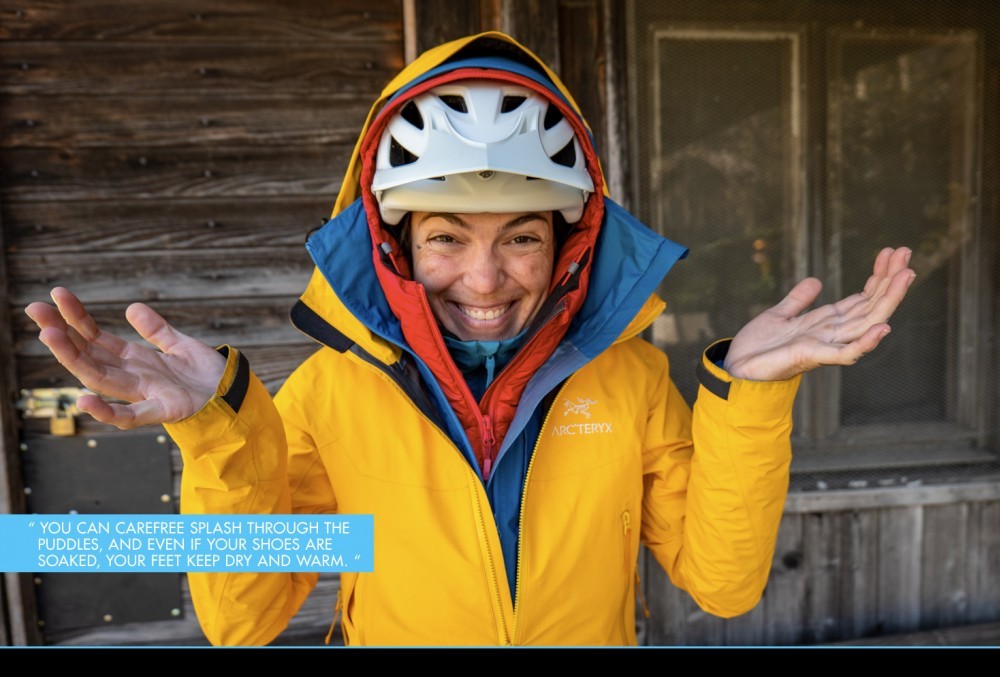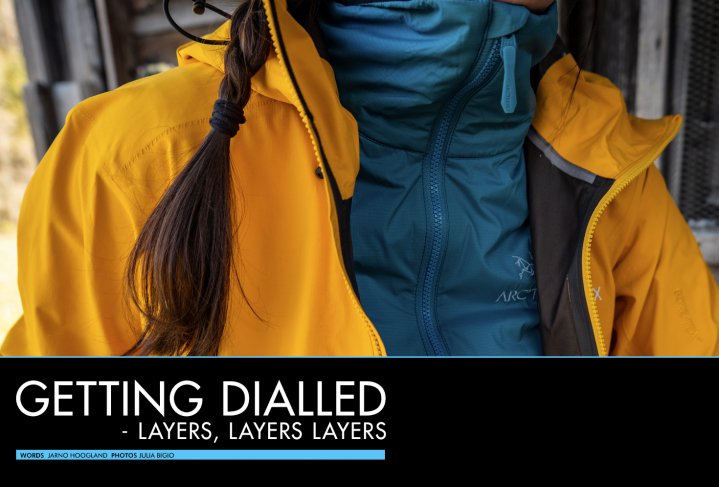
Getting Dialled - Layers,Layers, Layers
Issue 67 / Mon 25th Oct, 2021
When the temperature drops it’s time to layer up. Which materials to use, what to bring and how to stay warm without creating a micro climate inside your jacket, all in this Getting Dialled.
Summertime is such an awesome time for riding. Not only does it mean open chairlifts and dusty trails, it also makes clothing choice dead easy. Just get yourself some light breathable shorts, slap on a moisture wicking shirt and voila. Ready to rip.
Occasionally on big days out you throw a rain shell in your backpack, or a spare shirt if it’s particularly hot and you have a long climb ahead but that’s basically as complicated as it gets.
When the temperature starts to fluctuate more, things get slightly more complicated.
In this “Getting Dialled” we take a look at layers, how to stay warm without cooking yourself on the uphills and what materials work best for the bike rider.
Onion
First thing to know is that layering up like an onion is the way to go. More thin layers work much better, as you can really fine tune your body temperature by adding or removing layers.
Generally you start with an optional base layer, preferably made of wool, to wick sweat away from your body and keep the core warm. There are quite a few different thickness of these layers around, some really aimed at winter riding, while others are thin enough for use in autumn and spring. Also keep in mind what type of person you are, always cold or always sweaty and warm. If you’re the latter, you might want to skip this layer.
Next up is a jersey of some sort. I prefer riding long sleeved jerseys, as you can easily roll up the sleeves when temperatures rise. Depending on the material and added ventilation mesh, you can fine tune this layer for hotter or colder days.
When the temperatures really start to drop, a gilet can make a huge difference. It keeps the core warm, while you are still able to get rid of body heat through your arms. Have a look at which gilets are available, as there are plenty of options here, ranging from down insulated to super thin, wind proof ones with a mesh back to release the body heat. Another bonus point for the gilet, is that you can roll it up to a tiny package and stash it in your (hip) bag.
Recently, there have been a wide range of ultralight windbreaker jackets available. Packing smaller than a water bottle, only weighing a few grams and ideal for layering up. These are ideal to take with you when you are not sure what the weather will bring during your ride. We tend to opt for ones with a hood that fits over your helmet, in case the weather takes a turn for the worse.
If the temperatures really drop, it might be worth taking a down jacket. These also come in various different models, with more or less feathers in them to keep you warm. We prefer the lighter fill ones, like a 700 gram fill for example. These pack down small enough to fit in your bag and if it really gets cold, you can add a few more layers. When choosing a down jacket, go for one without a hood. Down jackets don’t like to get wet, and hood sticking out the back easily gets soaked.
Always make sure the jacket uses RDS down, which is responsibly sourced and aimed to minimize animal suffering. Until a few years ago, the synthetic down options were always inferior to real down, but there have been some big technological leaps in the past few years. Whichever jacket you choose, this is one layer where it pays off to invest and go for the best.
Another layer where price really is linked to performance is your rain shell. This layer is there to protect you from the elements. Lighter materials are more breathable, making them better for when you get hot and sweaty on the ride. Sadly they do tend to lose their waterproof ability quicker. When the day will be filled with downpours, a thicker jacket will keep the water out way better. Check if your jacket of choice has some sort of straps on the wrists, and vents underneath the armpits. Those make a world of difference.
Other bits
There are some other things that make riding in colder weather enjoyable. A good pair of gloves with a windproof layer make a big difference on cold days with high speed descents. Trails are just more enjoyable if you can feel your fingers.
I always like to bring a Buff along too. They’re light, and can be used as a scarf or bandana if it gets nippy. And they’re cheap too.
When the forecast says rain, it pays off to have a spare set of clothes waiting for you in the car. While riding you generate enough body heat to stay warm, and returning to the car and finding some dry, warm clothing always puts a smile on your face.
The opinions are divided on waterproof socks. Some think they are rubbish and give you sweaty feet, but I tend to really like using them on those soaky wet days. You can carefree splash through the puddles, and even if your shoes are soaked, your feet keep dry and warm.
Make sure to take some snacks or energy bars too. Your body uses a lot more energy when it’s cold, and being able to do a quick refuel can make all the difference.
Last but not least, taking a thermos with a hot beverage is always a winner. Hot, sweet tea usually does the job for me, but you can go wild with some coffee or hot chocolate even.
Bonus tip is to have a second thermos in the car, just like finishing a summer ride with a cold beer, finishing a winter ride with a hot drink is a winner.
By Jarno Hoogland
Jarno's life has revolved around two wheels ever since he swung a leg over his first BMX at age 4. After a BMX and DH racing career, he moved on to work for bike shops, distributors and brands before ending up in the editors seat at IMB. Based in the ultimate testing ground in the Swiss mountains, he runs his guiding operation and makes sure every IMB issue is filled with top notch content.




